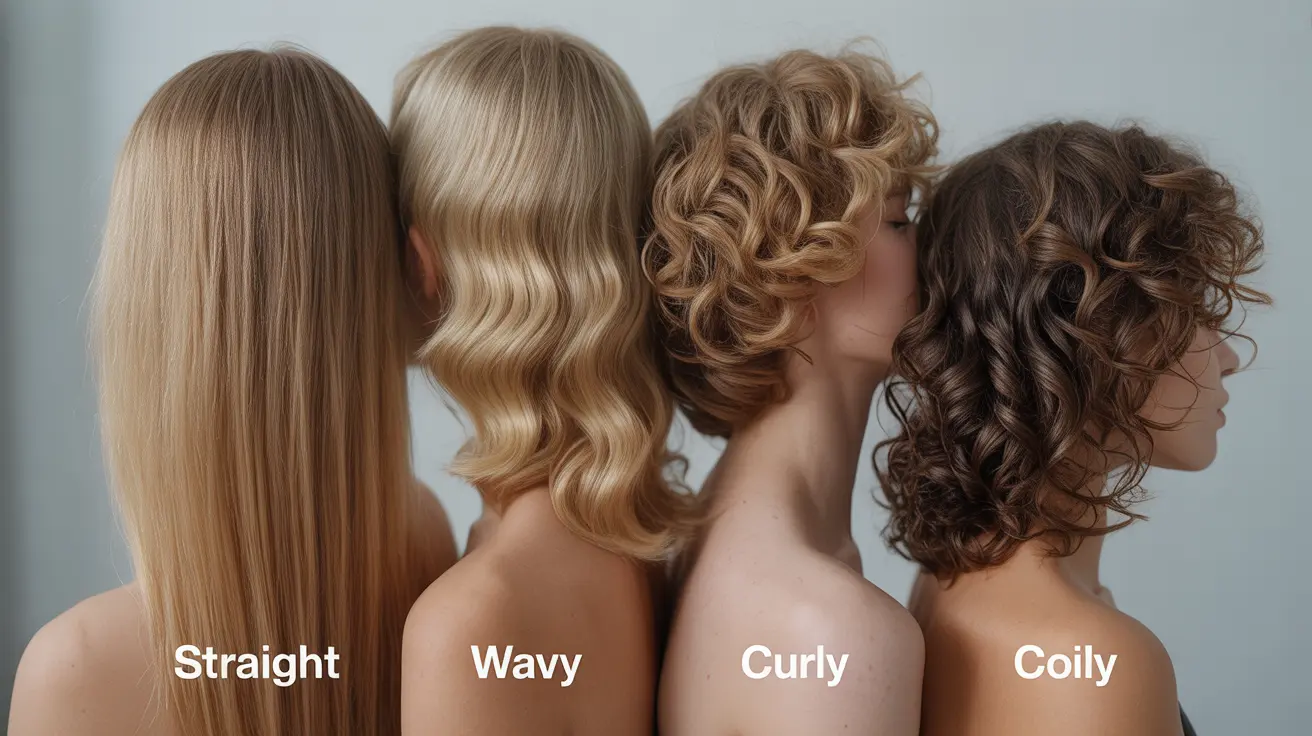Understanding your unique hair type is the key to achieving healthy, manageable hair that looks its best. Whether you have straight, wavy, curly, or coily hair, knowing your specific hair pattern and texture can revolutionize your hair care routine and help you choose the most effective products for your needs.
In this comprehensive guide, we'll explore the various hair types, textures, and patterns, helping you identify your own hair characteristics and learn the best ways to care for your specific hair type.
The Main Hair Type Categories
Hair types are typically classified into four main categories, each with its own distinct characteristics and care requirements:
Type 1: Straight Hair
Straight hair lies flat from root to tip without natural curves or waves. This hair type tends to be naturally shiny as oils can easily travel down the hair shaft. It can range from fine to coarse in texture and may be prone to oiliness.
Type 2: Wavy Hair
Wavy hair creates an "S" pattern and falls somewhere between straight and curly. This type usually has more body and can range from loose, beachy waves to more defined, consistent patterns. Waves typically become more pronounced toward the mid-lengths and ends of the hair.
Type 3: Curly Hair
Curly hair forms definite spiral patterns and can range from loose loops to tight corkscrews. This hair type tends to be more prone to dryness as natural oils have difficulty traveling down the curved hair shaft. Proper moisture balance is crucial for maintaining healthy curls.
Type 4: Coily Hair
Coily hair, also known as kinky or afro-textured hair, forms tight coils or zigzag patterns from the scalp. This hair type has the most pronounced curl pattern and requires special attention to moisture retention and gentle handling to prevent breakage.
Understanding Hair Texture and Density
Beyond curl pattern, hair texture plays a crucial role in determining your overall hair type:
Fine Hair
Fine hair strands are thin and delicate, often requiring lightweight products to avoid weighing them down. This texture can be prone to breakage and may appear flat without proper styling techniques.
Medium Hair
Medium-textured hair is the most common type, offering good versatility in styling. These strands have an average diameter and generally respond well to various hair care products.
Coarse Hair
Coarse hair has the largest diameter of all textures and often feels thick or rough to the touch. This texture typically requires richer products and may need extra conditioning to maintain softness and manageability.
Determining Your Hair Density
Hair density refers to how many individual strands you have per square inch of scalp:
- Low density: Scalp is easily visible through the hair
- Medium density: Scalp is partially visible
- High density: Scalp is barely visible or completely covered
Caring for Your Hair Type
Each hair type requires specific care strategies to maintain its health and appearance. Understanding your hair's unique characteristics helps you develop an effective care routine that addresses its particular needs.
Frequently Asked Questions
What are the different hair types, and how do I know which one I have?
Hair types are classified into four main categories: straight (Type 1), wavy (Type 2), curly (Type 3), and coily (Type 4). You can determine your type by observing your natural hair pattern when wet and dry, paying attention to whether it forms straight lines, S-waves, spiral curls, or tight coils.
Why is it important to understand your hair type and texture for choosing the right hair care products?
Understanding your hair type and texture helps you select products with the right formulation and weight for your specific needs. This knowledge prevents using products that might weigh down fine hair or fail to provide enough moisture for coarse, curly hair.
What are the best ways to care for wavy, curly, or coily hair, and are the routines different for each type?
Yes, each type requires different care routines. Wavy hair typically needs lightweight moisture and anti-frizz products, curly hair benefits from regular deep conditioning and curl-defining products, while coily hair requires intense moisturizing treatments and protective styling techniques.
How do hair texture (fine, medium, coarse) and hair density affect the way my hair looks and behaves?
Hair texture and density influence how your hair responds to products, styling techniques, and environmental factors. Fine hair may become easily weighed down, while coarse hair might need heavier products. Higher density hair typically requires more product and styling time than lower density hair.
Can my hair type change over time, and if so, what might cause this?
Yes, hair type can change due to hormonal fluctuations, aging, medical conditions, or chemical treatments. Pregnancy, menopause, thyroid issues, and certain medications can all affect hair texture and pattern. Some changes may be temporary, while others could be permanent.




